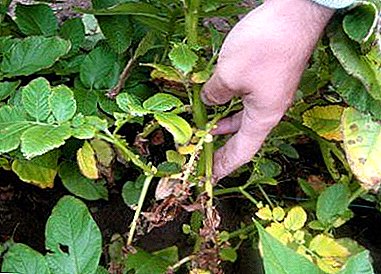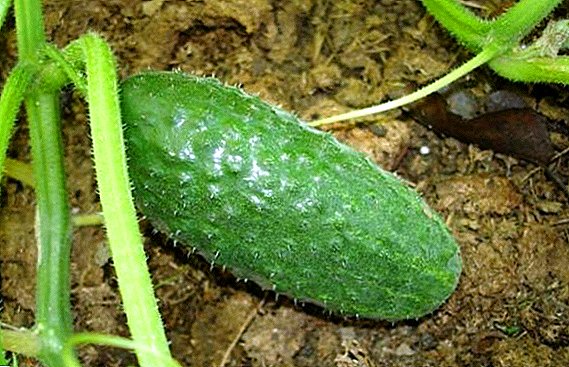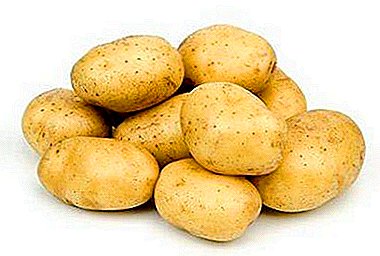 Traditional households do without special devices to increase incomes. Until recently, specialized institutions, such as farms or poultry farms, needed their use. We are talking about special cages intended for laying hens, which are very convenient for the birds, as it is convenient to carry them, and for the owners, as they facilitate the collection of eggs.
Traditional households do without special devices to increase incomes. Until recently, specialized institutions, such as farms or poultry farms, needed their use. We are talking about special cages intended for laying hens, which are very convenient for the birds, as it is convenient to carry them, and for the owners, as they facilitate the collection of eggs.
This is not about those cages in which they contain young stock or, for example, broilers, but about those that are designed to collect eggs, and which can both be purchased ready-made, and built with your own hands.
Content Features
Egg production has always been provided by the mobility of birds and the activity of their walking. However, with proper cell content, it can also be maintained at a sufficiently high level, moreover, the areas occupied by decent livestock are minimal.
In the cellular or intensive method, chickens are settled with up to six heads per cage, and each should get about a square meter of space. Otherwise, they will suffer from cramping, which will affect the egg production. Cage for one chicken can have an area of up to half a square meter, which fully meets the needs of the bird. 
Did you know? It is believed that the domestication of the chicken happened three thousand years ago in the territory of modern Ethiopia. All modern chickens are descended from Asian ancestors.
Of course, the restriction of space and movement implies enhanced care and careful observance of artificial conditions of detention, which affect the productivity of the economy.
How to make a cage
Unlike beef hens, laying hens require a cage with an inclined floor and a special chute for collecting eggs. Egg-type chickens are most often of small size, respectively, the cages require not too spacious for them - 60 square centimeters per individual, meat-egg breeds need more space - up to 80 square centimeters. 
Important! Too voluminous construction loses its meaning in terms of economic benefits, too close - in terms of vital indicators of livestock and productivity.
The bird cage has a fairly simple design so that even a person without special skills can make it with his own hands.
Required materials and tools
For the manufacture of cages for laying hens with their own hands does not require expensive materials or highly specialized tools. Its construction is also not particularly complicated and intricate. The basis is a frame made of wooden or metal bars.  Wood - although the material is environmentally friendly and natural, but not very durable. In addition, wood loses in terms of hygiene: it absorbs moisture and odors, it is rather difficult to remove contaminants from it, therefore many prefer metal, for example, fittings or metal profiles intended for plasterboard structures.
Wood - although the material is environmentally friendly and natural, but not very durable. In addition, wood loses in terms of hygiene: it absorbs moisture and odors, it is rather difficult to remove contaminants from it, therefore many prefer metal, for example, fittings or metal profiles intended for plasterboard structures.
Of of tools may need:
- hammer;
- hacksaw;
- pliers;
- file.
Get acquainted also with breeds of hens of an egg direction: Leggorn, Russian white, Loman Brown, Minorca and Pavlovskaya.
Materials for the manufacture of cells:
- wooden beam 40x40 or metal profile, for example, UD 27/28/4000;
- nails for wood or mounts for profile;
- tin for the manufacture of pallets;
- galvanized or stainless iron to make feeders and drinkers;
- 2.5x1, 25 or 50x25 millimeters grid, from which the floor, walls and ceiling of the structure are made;
- 50x50 mesh or wire for the manufacture of the front wall;
- heck or latches to lock the door.
Construction and dimensions of housing
The basis of the cell is frame, for which use wooden bars, metal guides or reinforcement. Wall and floor constructions consist of a grid. The cage presented below has a drawback - the inconvenience of sitting down and removing a chicken. It is intended for adult large specimens. 
Did you know? The hen recognizes a spoiled egg. If she comes across one, she throws it out of the nest. Damaged egg eats the same.
The owner, who is going to build a cage for laying hens, as a rule, conducts in his household an audit of the materials that are available, calculates the dimensions based on them, and then makes drawings. The grid is a necessary thing in the household; every meter can be useful, so when cutting, you should act carefully so that the minimum possible amount of waste remains.
Important! For one hen, the size of the cage is 0.5x0.5x0.65 meters, housing for 5-7 inhabitants requires more: 0.7x1.5x0.65 meters.
It is not recommended to settle in one cell more than 7 goals, expanding its size to 2-3 meters. If there are many birds, they should be built several dwellings of the recommended sizes. Birds will be uncomfortable in a fairly large space, and the care of large cages is much more difficult, because the full litter trays will become too heavy. One more thing - the more chickens live in the cage, the tighter the floor should be made of, and a decent part of the litter will linger on the bindings, without falling into the pan. 
Important! Too crap floor and too heavy pan - a significant drawback with regular cleaning of spacious chicken houses.
How to do it yourself
Frame
It should begin with the preparation of the frame - the foundation of the whole structure. Requirements for it: stability and additional strengthening of the bottom and walls. The design of the legs implies both a static installation with possible additional reinforcement in the form of "hairpins" and the possibility of moving the cage if the legs are provided with castors for transporting, for example, cleaning. 
Floor
For the floor are made shelves that will be located horizontally. One of them, as shown in the drawing, has a slope of 7-9 °. A pallet is installed on a straight line, the sloping floor serves as a floor for rolling eggs that fall into egg collectors. She stands forward about 10-15 centimeters. Gap for the pallet, which is installed between the sloping and straight shelves? makes 10-12 centimeters.  The edge of the shelf, which is tilted, is bent in such a way as to form a chute for receiving eggs, which roll down on an inclined surface. It must be quite deep in order to keep the egg from falling to the floor.
The edge of the shelf, which is tilted, is bent in such a way as to form a chute for receiving eggs, which roll down on an inclined surface. It must be quite deep in order to keep the egg from falling to the floor.
The egg jar is at an inaccessible distance for the chicken, its edges are skirted around with a tin sheet, and the ends are closed. These activities are necessary to preserve the integrity of the eggs. 
Did you know? A hen does not need a separate personal nest to carry eggs in it; she usually uses the one that comes to her first.
External walls and partitions
External walls should not be made deaf - this will make ventilation very difficult, which will not benefit the living conditions and violate sanitary standards. Partitions and walls are made of mesh, fix them with metal rivets using pliers. 
Front wall
The most difficult task is the construction of the front wall:
- there are feeders on it;
- free access to feed by birds;
- it serves as a door.
For its construction there are several options.
With a narrow cage, the front wall serves as a door at the same time. It is made on hinges and staked. For free access of birds to food, it is made from a large-mesh net. With a significant width of the cage, the door is made in the center of the front wall, built of mesh.
With sufficient inter-tier space, the removal of chickens from the cage can be done through the grid ceiling laid on top of the cage and fixed with latches.
Drinkers and feeders and trays
Both feeders and drinkers are made of stainless steel or galvanized sheet, which is bent, observing the required dimensions. They are hung on the front door or wall. There is also an option with a nipple device that supplies water to the cups for drinking. 
From the same leaves tin fold pallets in accordance with the drawings. Requirements for pallets: easy cleaning and handling.
The street version of the cage, which is carried out in the summer, is supplied with a slate roof. It can also be made from other scrap materials, such as linoleum or tarpaulin.
Arranging a place for chickens
Cages for laying hens can be made with your own hands according to the drawings, which are easy to make by yourself or use ready ones. The master can vary the area, add tiers, the main thing is that the floor should not bend, maintaining the weight of its inhabitants, and the conditions necessary for high productivity and comfortable stay of the livestock must be respected.
In each house there is a egg-box, a drinking bowl with a feeding trough, a mesh floor that passes through and a waste-collecting tray.  It is necessary to provide the bird with daylight as much as possible, because this is a guarantee of good egg production. Even if natural light is sufficient, it is necessary to extend the daylight artificially, especially in the cold season, when it is particularly short.
It is necessary to provide the bird with daylight as much as possible, because this is a guarantee of good egg production. Even if natural light is sufficient, it is necessary to extend the daylight artificially, especially in the cold season, when it is particularly short.
Did you know? Chicken can rush only in the light. If the moment has come when it is necessary to lay an egg, it will first wait for the light to appear.
The artificial lighting system consists of light bulbs and a dimmer with a timer located around the perimeter of the room. There should be several light bulbs, it is necessary to light the hens evenly, and make sure that everyone gets enough light and no one is in the dim light.  With the help of a dimmer, the intensity of illumination rises and decreases smoothly, which provides an artificially created illusion of changing the time of day in a natural way. One should not neglect such an opportunity, because when a bird is kept in a cage, it needs to create as many factors as natural as possible in order to improve and maintain the level of egg production.
With the help of a dimmer, the intensity of illumination rises and decreases smoothly, which provides an artificially created illusion of changing the time of day in a natural way. One should not neglect such an opportunity, because when a bird is kept in a cage, it needs to create as many factors as natural as possible in order to improve and maintain the level of egg production.
If for some reason the timer is not set, the owner will have to light the lights on and off at the same time.
Important! As the lack of lighting can badly affect the hens, so an artificial extension of daylight will not bring anything good: an excess of light makes the birds aggressive.
The room in which the laying hens live must meet certain requirements.
It is necessary to provide it with a ventilation system in order to get rid of unwanted odors, normalization of temperature and humidity indicators that inevitably increase in the habitat of living beings. A small room may well be ventilated by the supply system; a decent chicken house should be equipped with a system that covers the whole space.
The temperature is very important, which should be 16-18 ° C and not fall below 7-10 ° C, and humidity, acceptable indicators of which are 60-70%. It is advisable to warm the coop more: in summer it will protect young stock from drafts, in winter it will significantly reduce heating costs, which also need to be supplied with it. The materials that make up chickens should be easy to clean and handle.  It is also recommended to subject the livestock to periodic artificial ultraviolet irradiation, if it is impossible to do it in a natural way.
It is also recommended to subject the livestock to periodic artificial ultraviolet irradiation, if it is impossible to do it in a natural way.
We advise you to get acquainted with the meat and egg breeds of chickens: Indokury, Amroks, Rhode Island, Kuchinsky Jubilee, Maran, Loman Brown, foxy chik, redbro, Master Gray, Zagorsky Salmon, Poltava, Heisex Brown and Heisex White.
The benefits of cell content
The cellular content of chickens is very beneficial for the household, but, however, it has quite significant drawbacks.
The advantages include the following arguments:
- Chickens living in cages are in complete safety, they will not be stolen, other animals will not be crippled and predators will not be devoured.
- All birds are constantly in sight, so much easier to control their state of health and, as a consequence, to prevent epidemics.
- There are no contacts with other animals and birds, potential carriers of the infection.
- It is easier to create the conditions for the chickens to run longer.
- It does not take long to find an egg that was accidentally torn off in the bushes or another chicken-chosen place; the collection of eggs is extremely simple and convenient.
- The food goes much less, because the birds move less, moreover, in closed conditions, it is not eaten by extraneous birds and animals.
- Substantial savings in space.

Important! The cellular content of chickens saves about 15% of feed and makes the farm more productive.
The disadvantages of poultry farmers include the following:
- The restriction on the nature of a mobile bird in motion plays against its health and ability to rush.
- The need to compensate for the lack of solar lighting, which, as you know, contributes to the production of vitamin D: it has to be offered to chickens as part of the feed.
- Lack of grass: insects, grass, which has to be compensated in the form of additives in food.
- The danger of limited space in the epidemiological plan: the infection spreads many times faster than among birds in free-range.
Chickens moving freely in open spaces are certainly healthier: conditions for their maintenance are close to natural. But these same conditions bring the owner some inconvenience, which he does not agree to experience, but he is ready to level out the effects of cellular content, carrying out more attentive and balanced care.
Learn more about these diseases of chickens: coccidiosis, pasteurellosis (cholera), diarrhea and colibacillosis.
Nowadays, with a minimum of tools and a bit of expenses, it is possible to provide livestock with the necessary equipment. Such a construction as a cage for laying birds is not difficult to do with your own hands.
In moral and ethical terms, the cellular content is ambiguous, in some countries it is recognized as inhuman and prohibited for use in industry. The owner of the household or farm can quite reduce this harm to a minimum:
- not overpopulating the cell;
- settling chickens in cages only in winter;
- adjusting the food in such a way that the bird gets raw vegetables, grass or grass meal;
- practice cell content on the litter.
These techniques can very well affect the quality of life of the bird.
Of course, the content of laying hens in cages is economically more profitable than the traditional one. After all, the cages require a very small area, and a decent amount of livestock can fit into it. Caring for chickens with this method of maintenance is quite simple, although it is more laborious and troublesome. 












